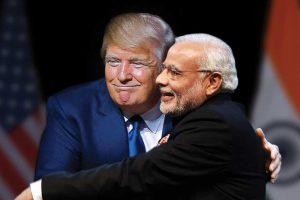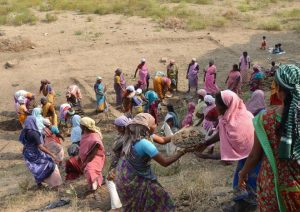
28-01-2017 (Important News Clippings)
To Download Click Here
Torture through the ages
Jallikattu, animal rights and the cultural argument — A changing collective consciousness

Between 1807-50, as if making up for past injustices, our collective consciousness suddenly woke up to ethically question the torture of all living beings. Is it just coincidence that around this time, in Britain for example, slave trade was abolished, the 1832 Reform Act was passed, and bear baiting, even dog fights, became illegal?
Conferring respect on ordinary electorates was accompanied by a ban on cruelty to animals and people, as if one entailed the other. Till then, voters were limited to a select few and hanging was a popular, town square event. Likewise, to set dog against dog, or bear against dogs, were huge draws often patronised by the rich and powerful. Elizabeth I, reportedly, could not tear herself away from such spectacles.
It would appear then that with the increase in democratic awareness, we also became mindful of animal life. Decades before Darwin came on the scene, 19th century attitudes were inclining towards accepting humans and animals as somewhat continuous creations. Therefore, what applied to us was now being extended to include other living creatures too. By this token convicts, their wickedness notwithstanding, deserved consideration as well.
Again, it was in the mid-19th century that the hangman’s rope was lengthened so that death would be quick; the earlier short drop left the condemned person dangling for long. Crucifixion, stoning, or the Chinese practice of Li Ching, where the convict’s flesh was slowly sliced off (hence the phrase, death by a thousand cuts), were no longer considered civilised. Likewise, in 1839, Britain banned punishment by drawing and quartering as this involved the strewing of the dead person’s body parts.All of this is crazily off the charts today, but in the past they were seen as normal, even fun. Though we still continue with capital punishment, yet we strive to make it as pain free as modern medical knowledge will allow – enter the lethal injection. No more howling and cheering from a frenzied crowd; the sentence is now delivered within prison confines.
All these changes have happened in recent times as old fashioned torture is no longer acceptable. Humans and beasts, individually and singly, are not to be put in pain, and if they have to die because we must punish, or we must eat, let us deliver the blow as softly as we can. Yet, when man and beast are performing together in acts that involve pain, sometimes death, there has been much stronger resistance against banning them. This is true of jallikattu, the bull fight and the fox hunt.
All these three were once banned and then un-banned. On these matters, the struggle between status quoists and change agents has been very contentious and bitter. The Catalonia region of Spain disallowed bullfights, but the Spanish Supreme Court ruled against it. The fox hunt likewise won judicial approval and, for the time being, jallikattu has also earned a reprieve.
Unlike dog fights or bear baiting, these are no longer instances of outright animal torture as humans are also involved. This is what makes jallikattu and bullfights appear sporty for now there is an aura of uncertain outcome, though highly controlled. Consequently, guilt is replaced by participatory euphoria and it is this that gives them the look and feel of being cultural and harmless.
If, however, only the rich participate in the sport, as in the case of tiger hunts, then such acts do not become “cultural”, deserving of popular approval. Fox hunting was never passionately defended as long as it was limited to the aristocrats. From the 1950s on numerous fox hunting clubs, with middle class membership, sprang up all over Britain lending this activity a democratic character.The Spanish bullfight has always been a spectacular public sport, not just because it entertained large crowds but also because matadors came from the ranks of ordinary people. It is this as well as their skills that together made bullfighters like Antonio Ordinez, Luis Dominguin, and Manuel Benitez (also known as El Cordobez) such super stars.
Jallikattu still does not have its home bred heroes, but it too is a popular sport that has become culture as it pits man against beast, rather ordinary men against ordinary beasts. It is almost as if we are compelled to demonstrate our mastery over nature at regular intervals. But because we are blessed with cunning, a trait that animals do not possess, we pick on four-legged creatures that are not carnivores, nor are naturally dangerous to us. We hunt foxes, that attack poultry, or we fight bulls that have no quarrel with humans. Nobody would like to take on tigers or grizzly bears and then call it culture.As humans we need to show off our cultural might and we do this best by fighting the weak, never the strong, not even those who are our equals. This is what prompted the anarchist Peter Kropotkin to remark that nature is not “red in tooth and claw”, but people are.
Getting India’s civil servants to perform

The bureaucracy should be skilled to come up with policy choices to help an elected government chase objectives the people have entrusted to them. India must also take a page from successful democracies that insulate bureaucrats from arbitrary whims of the political class. Good decisions must be rewarded, even as bad ones made in good faith must be tolerated if reasonable due diligence had been done. The end of discretion in governance would be disastrous. Civil servants must have room for legitimate use of discretion without attracting charges of mala fide over the results.What needs to be factored in is not whether a bureaucrat has made a mistake, but whether she has innovatively applied herself to her job and delivered results. Rightly, successive commissions on civil service have recommended ways to institute protection for bureaucrats, but greater accountability, incentives to perform, think creatively and respond swiftly should go hand in hand. Senior-level appointments should be based on selection, with aspirants drawn from the pool of civil servants and professionals looking for lateral entry. Those who don’t make the cut must exit just as in the army.
सोशल मीडिया की बढ़ती ताकत
बीते कुछ सप्ताह के दौरान हमने असली सोशल मीडिया की ताकत देखी। अमेरिकी राष्ट्रपति डॉनल्ड ट्रंप और मैक्सिको के राष्ट्रपति एनरिक पेना नीटो की ट्विटर पर हो रही चर्चा ने दुनिया भर में न केवल सुर्खियां बटोरीं बल्कि मानव इतिहास के सबसे सफल कारोबारी समझौते नाफ्टा (उत्तरी अमेरिकी मुक्त व्यापार समझौते) तक को जोखिम में डाल दिया। दुनिया के सबसे ताकतवर मुल्क के नेता और उसके सबसे घनी आबादी वाले पड़ोसी मुल्क के नेताओं ने महज 280 शब्दों में इतिहास की नई इबारत लिख दी। इसके मूल में प्रश्न यह था कि अमेरिकी सीमा पर 15 अरब डॉलर की लागत वाली दीवार की लागत कौन उठाएगा।
कैसी होगी ट्रम्प और मोदी की जुगलबंदी?

अमेरिका की अर्थव्यवस्था में भारतीयों की भूमिका अद्वितीय है। प्रवासी भारतीय सबसे अधिक समृद्ध, सबसे अधिक शिक्षित, सबसे अधिक खुशहाल और सबसे अधिक मर्यादित समुदाय है। यदि उनके आगमन पर ट्रम्प रोक लगाएंगे और उनसे रोजगार छीनेंगे तो भारत चुप कैसे बैठेगा? इससे वे अमेरिका की ही हानि करेंगे। यदि भारतीय लोग अमेरिका छोड़ दें तो ट्रम्प इतने योग्य और अनुशासित अमेरिकियों को कहां से लाएंगे? राष्ट्रपति बनते ही ट्रम्प ने अपने अटपटे लगने वाले वादों को लागू करना शुरू कर दिया है, उससे यह संकेत मिलता है कि उक्त मुद्दा शीघ्र ही विवादास्पद बनने वाला है। ऐसे में दो देशों के नेताओं के बीच कायम किया गया दिखावटी सद्भाव कहां तक टिक पाएगा? दूसरी बात भी कम महत्वपूर्ण नहीं है। वह सिर्फ भारत के बारे में ही नहीं है। उसका संदर्भ बड़ा है। ट्रम्प का कहना है कि अमेरिकी पूंजी का फायदा दुनिया के दूसरे देश उठा रहे हैं। अब ट्रम्प-प्रशासन इस नीति पर पुनर्विचार करेगा। क्या भारत में लगी अमेरिकी पूंजी और उससे पैदा होने वाले रोजगारों पर भी ट्रम्प की वक्र-दृष्टि होगी? वे स्वयं व्यवसायी रहे हैं। उन्हें पता होना चाहिए कि अब से कई दशक पहले अमेरिका के प्रसिद्ध विदेश मंत्री जाॅन फाॅस्टर डलेस ने बाहर जाने वाले अमेरिकी डाॅलर के बारे में कहा था कि सहायता या विनियोग के नाम पर बाहर जाने वाला एक डाॅलर, तीन डाॅलर बनकर वापस लौटता है। भारत जैसे देशों में लगी अमेरिकी पूंजी हमेशा अमेरिका के लिए ही ज्यादा फायदे दुहती है। ट्रम्प का यह कहना सही नहीं है कि ‘हमने अन्य देशों को मालदार बना दिया है’ और हमारे देश की ‘संपदा, शक्ति और आत्मविश्वास हवा में उड़ गए हैं।’ आशा है कि ट्रम्प प्रशासन के अफसर उन्हें जब अमेरिकी नीतियों के अंदरूनी रहस्य समझाएंगे तो उनके विचारों में कुछ बदलाव आएगा। तब शायद वे सिर्फ ‘पहले अमेरिका’ कहने के साथ यह भी कह दें कि ‘दूसरे भी साथ-साथ।’
इन आशंकाओं के बावजूद अभी ऐसा लगता है कि ट्रम्प के अमेरिका और मोदी के भारत में आतंकवाद पर जबर्दस्त जुगलबंदी हो सकती है। यूं तो ओबामा भी आतंकवाद का विरोध करते रहे लेकिन, ट्रम्प ने आतंकवाद के उन्मूलन के लिए जैसा खांडा खड़काया है, पिछले 20 साल में किसी भी अमेरिकी राष्ट्रपति ने नहीं खड़काया। उन्होंने सात मुस्लिम राष्ट्रों के नागरिकों के अमेरिका आने पर भी रोक लगा दी है। पश्चिम एशिया के इन राष्ट्रों में आतंकियों का दबदबा है। भारत के लिए जरा आश्चर्य की बात है कि इन राष्ट्रों की सूची में पाकिस्तान और अफगानिस्तान का नाम नहीं है। भारत तो इन्हीं राष्ट्रों के आतंकियों का शिकार है। क्या ट्रम्प भी अन्य राष्ट्रपतियों की तरह केवल उन्हीं आतंकी राष्ट्रों के खिलाफ होंगे, जो अमेरिकी हितों को चोट पहुंचाते हैं? यदि ऐसा होगा तो मानना पड़ेगा कि उन्होंने मोदी को सब्जबाग दिखा दिया है। उन्हें जब नवाज शरीफ ने जीतने पर बधाई दी थी, तब उनकी लफ्फाजी देखने लायक थी। उन्होंने नवाज और पाकिस्तान को भी सिर पर बिठा लिया था। यदि ट्रम्प अफगानिस्तान से पूरी तरह हाथ धोना चाहेंगे और पाकिस्तान को चीन के हाथों में सौंप देंगे तो अमेरिका की दक्षिण एशियाई नीति शीर्षासन की मुद्रा धारण कर लेगी। यद्यपि इजरायल के प्रति मोदी और ट्रम्प का भाव चाहे एक-जैसा हो लेकिन, भारत इजरायल की ट्रम्प नीति का पूर्ण समर्थन नहीं कर पाएगा। हमारे सुयोग्य विदेश सचिव जयशंकर पर निर्भर करता है कि ट्रम्प की इस अल्हड़ नदी में वे भारत की नाव को किस तरह खेते रहेंगे।
ट्रम्प ने अमेरिका को 12 राष्ट्रीय प्रशांत संगठन (टीपीटी) से भी मुक्त कर लिया है। इन राष्ट्रों पर चीन का दबदबा बढ़ेगा। वे ‘नाटो’ सैन्य संगठन को भी अप्रासंगिक कह चुके हैं। वे पुतिन के रूस को अमेरिका के बहुत निकट लाना चाहते हैं। वे मैक्सिको और अमेरिका के बीच दीवार खड़ी करने पर तुले हैं। वे जलवायु संबंधी वैश्विक सर्वसम्मति के भी विरुद्ध हैं। उनका और उनकी नीतियों का अमेरिका में ही जमकर विरोध हो रहा है। वे किसी को नहीं बख्श रहे। उन्होंने अपनी पार्टी के असंतुष्ट नेताओं और अमेरिकी पत्रकारों की भी खूब खबर ली है। पिछले राष्ट्रपतियों और प्रशासनों पर भी रंदा चलाने में वे नहीं चूके हैं। ऐसी हालत में ट्रम्प के साथ चलते वक्त भारत को अपने कदम फूंक-फूंककर रखने होंगे।
After the quake
Bhuj shows that disaster management practice remains technical, instrumental

In fact, the pace of development in Bhuj following the disaster has been unprecedented. The town is now spread over 56 sq km — almost four times its size in 2001. It boasts high-rise apartments, sprawling supermarkets, beauty salons, recreation centres, wide four-lane highways, a modern earthquake-resistant hospital and an operational airport. Aid workers, global experts, journalists, corporates and religious groups of every denomination live in Bhuj today. Development banks and state governments have invested vast sums in infrastructure. Land has become an attractive investment. It is now common to hear Hindi spoken in Bhuj and hotels and cyber cafes complete to win the business of immigrants. If an earlier earthquake in the 19th century is thought to have encouraged many people to leave Kutch and settle overseas, then there is some irony in the fact that the 2001 earthquake brought thousands of people to the region.
In Bhuj’s rebuilding, the Gujarat approach is widely looked at as a model for reconstruction. From the recent post-earthquake reconstruction in Nepal in 2015 to the 2005 Kashmir earthquake, the Gujarat model is widely replicated. Yet, although the model is celebrated, it is vital to highlight certain concerns flattened in the Bhuj plan. Any relief programme needs to be based on proper assessments of needy and vulnerable groups. But the rehabilitation packages announced soon after the Bhuj disaster offered unequal treatment to various categories of earthquake-affected people. Those who’d suffered equally in terms of damages were given unequal amounts of aid. The size of agricultural lands was also adopted as one of the criterias for assistance given. Places nearer the epicentre received higher assistance. Relief provisions also accorded more assistance for completely collapsed houses in urban areas than rural locations. Pre-earthquake house sizes were taken into consideration; that meant richer people were likely to derive larger benefits.
Post-earthquake development was envisaged to attract investment and create a corporate sector. In the process, the informal sector was pushed to less valuable, less visible spaces. Post-disaster development planning also completely ignored the entitlements and rights of the landless. The pro-rich, anti-poor bias of development plans in terms of land use became clear in the imagination of a new Bhuj. The entitlement of land for the urban poor, who perform important functions, is critical — by changing such settlements, development snatched away entitlements. Expensive public land in Bhuj has been given to better-off residents; land inhabited by the poor in Rabari was acquired for government offices.
To improve public transport, Bhuj roads were widened; this adversely affected hawkers and other occupiers of public space, who were evicted. The 60 per cent population of Bhuj town, who lived in 32 unauthorised pockets outside Kotvistar for over 25 years, did not receive any compensation from the government as they didn’t possess requisite land entitlement (legal claim on the land). Earlier, these residents wanted regularisation of these pockets — but no action was taken. Bheer Bazar, earlier the centre of all commercial activities where artisans and hawkers worked, was dismantled. Similarly, the Waghri community (mainly comprising of Muslim labourers) residing near Dadupeer Road for generations was also driven out, on the pretext of encroachment.
In Bhuj’s relocated villages, the situation isn’t different. Most relocation has been done on agricultural land acquired from other villages. Some villagers either lost land or were relocated far away. The new villages are also larger; this meant expensive infrastructure, again “provided” by the government. But what wasn’t thought of was the lack of village committees’ financial resources to maintain this infrastructure; local village committees had to increase taxes, which many villagers can’t afford. House allocation on the size of land holdings also created new disparities.
While NGOs emerged as a significant stakeholder in rehabilitation, local self-governing bodies like panchayats and municipalities were not sufficiently empowered. As Bhuj shows, disaster management practice in the country remains highly technical and instrumental — the current model does not have any effective policy framework to address social exclusion and the marginalisation of the poor. But any discussion on disaster management must address the proper assessment and identification of vulnerable groups. Reconstruction doesn’t mean only rebuilding houses but rebuilding lives, particularly of the weak. That alone leads to real development.
Date: 27-01-17
Carrots, not sticks
Incentives for digital transactions are welcome. But a tax on cash transactions is not a good idea

“We must make the transactions cost-effective and strengthen cloud servers on the bank side,” Andhra Pradesh Chief Minister Chandrababu Naidu, who heads the panel, said after submitting an interim report on digital payments to Prime Minister Narendra Modi. Some of the committee’s recommendations try to address the concerns voiced by small traders after the government announced its intention to digitise the economy. The CM’s panel has suggested that the ministry of electronics and information technology subsidise the purchases of smartphones by small merchants and those outside the income tax bracket. The panel has also recommended tax rebates to incentivise digital transactions.
These incentives come with an unwelcome disincentive. The panel has recommended the reintroduction of the bank cash transaction tax (BCTT). The tax, which was levied on cash withdrawals of over Rs 50,000, was originally introduced in 2005 to keep track of unaccounted money and trace its source, but was withdrawn in 2009. There have been periodic demands to reintroduce the tax. In 2014, the Tax Administration Reforms Committee chaired by Parthasarathi Shome had recommended reinstating the said tax as “an effective administrative measure”.
The government had then rejected the recommendation on grounds that it would hurt the economy. Given that the economy has undergone a shock in the aftermath of demonetisation, re-introducing the BCTT would be ill-advised. Taxing cash transaction will also do more harm than good since, even by the committee’s admission, there is some way to go to make digital transactions economical.
Internet speeds in the country, for instance, are notoriously slow. It would be unfair to expect that digital infrastructure can be created overnight — or even in a few months. The incentives suggested by the committee, however, could spur the migration to a digital economy even while the government works on boosting infrastructure. The ball is now in the finance minister’s court.
Date: 26-01-17
Shot in the arm
Mission Indradhanush marks the Centre’s commitment to building a healthy India

India should take pride in its progress in public health. Life expectancy has increased from 63.5 to 67.9 during the last decade; through 2009 to 2015, the maternal mortality rate has decreased from 212 deaths per 100,000 live births to 167 deaths and infant mortality rate has decreased from 50 to 37 deaths per 1,000 live births. We have also eradicated polio and eliminated maternal and neonatal tetanus. These successes mark India’s dedication to ensuring its people remain healthy and productive. However, as our country moves towards achieving its aspirations of better health, one of the biggest challenges we continue to face is high child death and disability.
Every year, 2.6 crore children are born in India; nearly 11.4 lakh die before their fifth birthday, many from preventable causes. We are determined to save the life of every child. A powerful weapon against deadly childhood diseases is immunisation. To ensure that every child has access to immunisation, MoHFW launched Mission Indradhanush (MI) in 2014.
MI is a special drive to vaccinate all unvaccinated and partially vaccinated children, protecting them against 10 life-threatening diseases, including diphtheria, whooping cough, tetanus, polio and measles, among others. During MI drives, pregnant women are administered the tetanus vaccine, ORS packets and zinc tablets are distributed for use in the event of severe diarrhoea or dehydration and vitamin A doses are administered to boost child immunity.
MI is one of the largest immunisation programmes in the world. In the first three phases, 28.7 lakh immunisation sessions were conducted, covering 2.1 crore children, of which 55 lakh were fully immunised. Also, 55.9 lakh pregnant women were given the tetanus toxoid vaccine across 497 high-focus districts. Since the launch of MI, full immunisation coverage has increased by 5 per cent to 7 per cent. The goal of MI is to achieve more than 90 per cent full immunisation coverage among children in the country by 2020. Set to enter its fourth phase, MI will initially cover 67 districts across the eight north-eastern states, some of the most remote and inaccessible districts in the country.Further, the government has strategically introduced several new vaccines in the Universal Immunisation Programme (UIP): The pentavalent vaccine, which protects against five diseases, was introduced throughout the country in 2015; rotavirus vaccine, which protects against rotavirus diarrhoea, has been introduced in four states so far; and inactivated polio vaccine, which protects against polio, was introduced in 2015 and expanded across all states by the middle of 2016. In the coming weeks, we will introduce two new vaccines into the UIP — measles-rubella (MR) vaccine, for protection against measles as well as congenital birth defects caused by rubella, and pneumococcal conjugate vaccine (PCV) to protect against pneumonia. We will also scale up rotavirus vaccine in five more states.
Pneumonia and severe diarrhoea are responsible for more deaths of children under five in the country than all other infectious diseases. Pneumococcal pneumonia is responsible for an estimated annual 5.6 lakh cases and 1.05 lakh deaths in India. Measles and rubella also contribute significantly to India’s child mortality and morbidity. Thankfully, the MR vaccine protects children against measles as well as rubella. Protection from rubella is essential to prevent congenital rubella syndrome, which can cause blinding cataracts, deafness and heart disease.
Immunisation is one of the most cost-effective public health interventions, yielding a 44-fold return on investment. Immunisation helps the country invest in human capital, contributing to future economic growth and reducing the economic burdens of hospitalisation and treatment costs. And it offers wider benefits. For instance, the lessons learned from the special immunisation campaign has contributed to strengthening other public health services, including deworming and diarrhoea control.
Trainings offered to frontline workers are facilitating a higher number of institutional deliveries and increase in newborn care, in addition to immunisation. As health workers reach out to people in previously unaccessed and remote areas, MI has created an interface to connect populations with a wide range of health services and strengthened health systems in these areas. The life of every child is precious. Our government is committed to investing in India’s children, towards enabling a secure and progressive future.
नौकरशाही की ईमानदारी व कार्य-कुशलता के सवाल
हाल में केंद्र सरकार ने भारतीय पुलिस सेवा के दो तथा भारतीय प्रशासनिक सेवा के एक अधिकारी को अनिवार्य सेवानिवृत्ति दे दी। मीडिया की रिपोर्टों के अनुसार, इनके विरुद्ध भ्रष्टाचार और अनियमितता के गंभीर आरोप थे। एक पुलिस अधीक्षक स्तर के अधिकारी के खिलाफ तो आय से अधिक संपत्ति का मामला भी चल रहा है। इससे सरकार ने एक सख्त संदेश देने का प्रयास किया है। भ्रष्टाचार के ऐसे मामलों में संविधान के अनुच्छेद 311 के तहत भ्रष्ट कर्मियों को सेवा से बर्खास्त या उनकी पदावनति की जा सकती है, पर उसकी लंबी प्रक्रिया होती है। अनिवार्य सेवानिवृत्ति के लिए ऐसी कोई प्रक्रिया नहीं है। यह दंडात्मक नहीं है और उन्हें पेंशन जैसे लाभ से वंचित नहीं किया जाता। मुअत्तल करने की प्रक्रिया में और कई वर्ष या शायद दशक लग जाते।
संविधान के अनुच्छेद 311(2) में सरकारी कर्मी को सेवा से हटाए जाने, मुअत्तल करने तथा उसके पदावनति का प्रावधान है, पर इसका इस्तेमाल बहुत ही कम हुआ है। भ्रष्टाचार के गंभीर आरोप जब किसी के विरुद्ध लगते हैं, तो अभियोजन शुरू करने के पहले उसे नियुक्त करने वाले अधिकारी की पूर्वानुमति की आवश्यकता होती है। प्रशासनिक सेवा के अधिकारियों के मामले में यह अनुमति केंद्रीय कार्मिक मंत्रालय देता है, जबकि पुलिस सेवा के लिए केंद्रीय गृह मंत्रालय। ऐसे अनेक उदाहरण हैं, जब आवेदन के बावजूद अनुमति नहीं मिली। इस दिशा में भी सरकार ने एक महत्वपूर्ण बदलाव किया है। अब किसी भी अधिकारी के खिलाफ लगे आरोपों की विभागीय जांच छह महीने के भीतर पूरी करने की समय-सीमा तय की गई है। भ्रष्ट अधिकारियों की मदद के लिए जो फाइलें दबा दी जाती थीं, वैसा अब शायद संभव न हो पाए।
नौकरशाही में सुधार के सारे प्रयास अक्सर उन बाबुओं द्वारा विफल कर दिए जाते हैं, जो यथास्थिति के पोषक होते हैं। 1917 की रूसी क्रांति के बाद अधिकतर नौकरशाहों को या तो फांसी दे दी गई या उन्हें कन्संट्रेशन कैंप में भेज दिया गया, क्योंकि उन्हें यथास्थितिवाद का एजेंट माना गया था। पर बाद में साम्यवादी सरकार ने नौकरशाही का एक बड़ा ढांचा खड़ा कर दिया। इसलिए इससे छुटकारा पाना आसान काम नहीं है।
यह एक अहम सवाल है कि किसी की दक्षता मापने का पैमाना क्या हो? क्या यह इससे तय होगा कि कौन कितनी फाइलें निपटाता है, क्योंकि सरकार फाइलों पर चलती है? ब्रिटिश हुकूमत की यह पुरानी परंपरा अब भी बरकरार है। लॉर्ड कर्जन ने सरकारी काम-काज में होने वाली देरी की भर्त्सना की थी और इसके लिए गंभीर प्रयास किया था कि विभागीय फाइलों पर नोटिंग का पहाड़ न बने। एक महत्वपूर्ण फाइल पर उनकी रोचक टिप्पणी है- ‘पृथ्वी की दैनिक परिक्रमा की तरह फाइल चलती रही- शानदार, भव्य, अचूक व धीमी। अब अपेक्षित मौसम में, इसने परिक्रमा पूरी कर ली है, तो मुझे अंतिम टिप्पणी लिखनी है।’ उन्होंने सरकारी कर्मियों की काहिली पर दुख जाहिर किया तथा प्रशासन को गतिशील बनाने का प्रयास किया, परंतु वह सफल नहीं हुए। अप्रैल, 1899 में उन्होंने लिखा,छह महीने में कुछ नहीं हुआ है। ‘लालफीताशाही’ जैसे बदनाम शब्द की उत्पत्ति इसी कारण हुई, क्योंकि फाइलों को लाल फीते से बांधा जाता था और एक बार बांध दिए जाने के बाद यह मान लिया जाता था कि यह फाइल ठंडे बस्ते में चली गई।
नौकरशाही कार्यपालिका का स्थायी अंग है। मैक्स वेबर के शब्दों में, नौकरशाही को निष्पक्ष होकर सरकार की सेवा उत्साह और ईमानदारी से करनी चाहिए। उनका मानना था कि नौकरशाहों को परदे के पीछे से काम करना चाहिए। अब अधिकतर बाबुओं को किसी न किसी राजनेता के प्रति वफादारी दिखाने में गुरेज नहीं है, भले ही सत्ता-परिवर्तन के बाद उनका रंग बदल जाए। अवकाश के बाद पद पाने की कामना में वे कई पक्षपात करते हैं। नेहरू ने नौकरशाही के असली चरित्र को समझ लिया था। इसलिए उन्होंने सामुदायिक विकास का कार्यक्रम शुरू किया था, जिसमें अधिकारी गांव-गांव जाकर लोगों के साथ पेड़ के नीचे बैठकर उनकी राय लेते थे कि विकास कैसे हो? उत्तर प्रदेश के इटावा से इसकी शुरुआत हुई थी, पर दो-तीन जिलों से आगे यह कार्यक्रम बढ़ नहीं पाया।
सुधांशु रंजन, वरिष्ठ टीवी पत्रकार,(ये लेखक के अपने विचार हैं)
Setback to climate action plans
That Donald Trump’s scepticism about climate change will adversely impact policies to address global warming became abundantly clear minutes after his swearing-in as U.S. President. The White House website quickly deleted all mention of climate change. Turning its attention to other agencies, the Trump administration instructed the U.S. Environmental Protection Agency to follow suit and scrub all mention of climate change from its website as well. But following a protest by scientists and others, the administration softened its stand and indicated that the agency’s website was only being “reviewed” and that it had “no immediate plans to remove the content” on climate change. Mr. Trump has also resurrected the controversial Keystone XL, that former President Barack Obama had blocked after a protracted battle with policymakers, and Dakota Access pipelines. The Trump administration had issued a gag order to scientists at the EPA and the U.S. Department of Agriculture to stop them from speaking to the media; it subsequently changed its policy with respect to EPA but has mandated that even routine data and studies be “reviewed” before being released to the public. In line with his thinking that “global warming is an expensive hoax”, Mr. Trump plans to re-energise the fossil-fuel industry. The America First Energy Plan listed on the White House website aims to increase fossil fuel extraction in the name of creating more jobs, and in the process “eliminating”, among other things, Mr. Obama’s climate action plan.Even more alarming is Mr. Trump’s intention to reverse America’s involvement in the historic Paris climate accord. Under the pact, 195 countries have agreed to limit the increase in global temperature since pre-industrial time to less than 2°C in the 21st century, and try to work towards reaching a tougher target of 1.5°C. In November 2014, Mr. Obama announced a new target to cut greenhouse gas emissions 26-28% below 2005 levels by 2025. Among other measures taken in 2015, the U.S. had finalised the clean power plan to reduce carbon dioxide emissions from the power sector to 32% below 2005 levels by 2030. With the average global temperature already reaching 0.8°C above pre-industrial levels, there are fears that further delay will have long-term repercussions that would be near impossible to mitigate. With the current and proposed policies by the U.S. already inadequate to meet the Paris target, any negative deviation from the plan will have implications for the entire world.
Date: 27-01-17
Case for targeted basic income

With anti-globalist populism on the rise, several advanced countries are considering whether they should start mailing cheques to the unemployed. Finland’s is the best known trial. Two thousand randomly selected unemployed Finns will for the next two years receive €560 in guaranteed tax-free incomes every month. The payments will continue even when they try out odd jobs. If the pilot is successful, the programme could be extended to all adult Finns.
Economists are advocating universal basic incomes for fighting inequality, slow wage growth, advancing automation and fears that immigrants will take away jobs. While free trade and technological advances have grown national incomes, not every individual is better off. There are winners and losers. Redistributive government intervention is needed so that no one is left worse off.
Lessons from a pilot project
The ‘transformative’ potential of guaranteed unconditional incomes was demonstrated in Madhya Pradesh back in 2014, which is documented in the book Basic Income: A Transformative Policy for India (2015) by Sarath Davala, Renana Jhabvala, Soumya K. Mehta and Guy Standing. The income supplements given amounted to less than a third of monthly expenditure for families living at the poverty line. The authors reported several positive effects of the experiment, some of which were published in Seminar. One, nutrition intake rose. Specifically, consumption of pulses, fresh vegetables and meat was up 1,000%, 888% and 600% respectively. As a result, incidence of illness dropped. Enrolment and attendance, especially among female students, in schools improved. Two, it resulted in more equitable development. On receiving the payments, marginalised individuals began exercising agency within their households and the community. Three, there were also economic spin-offs as villagers worked harder than before, with a number of adults engaging in two economic activities (own-account farming with small business on the side). Four, indebtedness decreased as the propensity to save increased over the pilot period.
The results dispel doubts such as whether ungrateful welfare abusers will buy alcohol with their new-found income, if welfare payments are dignity-destroying and other such apprehensions often expressed as ‘don’t just give them fish; teach them how to fish’.To those too weak, unwell or challenged physically to pick up skills and take up jobs, guaranteed incomes provide a safety net. Where people are skilled and employed, but receive low wages, as seen in the case of handloom weavers or in small enterprises, basic incomes can supplement earnings and support welfare.
The feasibility quotient
Chief Economic Adviser Arvind Subramanian has said that he is devoting a chapter in the annual Economic Survey (to be presented on January 31) to discussing unconditional universal basic income as a tool for poverty reduction.The Food Security Act already provides for statutory income transfers, but the appeal of a policy idea involving money payments to voters cannot be overstated —especially to a government past the midpoint in its first term.
The United Progressive Alliance’s return to office in 2009 is at times attributed to a job-guarantee scheme covering manual labour work and wages for 100 days in a year at the going notified wage rates. The scheme was made applicable in all the 615 districts of the country by 2008-09. A basic income scheme will be administratively easier and cleaner than the Mahatma Gandhi National Rural Employment Guarantee Scheme (MGNREGS): putting money into select Aadhaar-seeded Jan-Dhan bank accounts ought to be relatively simple.
If a basic income is introduced in addition to the two statutory income transfer schemes for food and wage jobs already in place, the government’s deficit will balloon. Both will have to be reformed if the plan is to guarantee all three: food, basic income and wage jobs. Even if there are no plans for a new income guarantee, the Centre should attend to MGNREGS funding, implementation and course correction — something it has committed to doing. The UPA flagship’s accomplishments, despite the numerous imperfections it suffers from, are well-documented.
A new universal basic income for all Indians won’t be affordable unless it replaces the whole multitude of programmes and subsidies currently in place. That would rid the welfare system of all the existing overlaps and gaps, but the simplicity will extract huge political capital.More feasible is a basic income targeted at the most deprived, using the socio-economic census. Creating sustainable funding sources for it, whether by way of new taxes or by streamlining entrenched subsidies and incentives, will still be a challenge. One worth taking up, for it will also be an opportunity to reinvent the welfare system.
Puja Mehra is a Delhi-based journalist.



